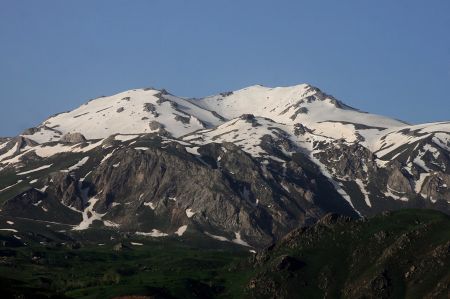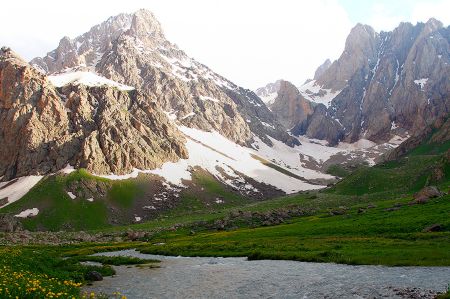Hakkari - surrounded by 3,000 meter high mountains!
- Written by Portal Editor
Hakkari (Kurdish: Colemêrg) is one of Turkey's 81 provinces and borders Iran to the east and Iraq to the south. To the north is Van and to the west is Şırnak.
The capital is the Hakkari of the same name at the mountainous south-eastern point of Turkey. The population was 246,469 at the last census in 2007. The province has an area of 7121 km² and is located at about 1700 m asl.
The region around Hakkari is a very mountainous area. There are more than 30 mountains higher than 3000m. The highest is Cilo (Reşko) which is 4135 m high, followed by Mordağ (3810 m), Sandil (3818 m) and Geveruki (3680 m) peaks. Hakkâri consists of 10% plateaus, also called Yayla. Well-known Yayla areas among them are Kandil, Shandil, Berçelan, Kanimehan and Vare Berkizan.
The counties of Hakkâri Province are:
* Hakkari
* Çukurca (Kurdish Çelê)
* Şemdinli (Kurdish Şemzînan)
* Yüksekova (Kurdish trade)
Hakkari - Principalities of Hubuškia and Zamua
 Hakkari has been inhabited by humans since ancient times. There are prehistoric rock drawings whose dating and assignment are still completely unclear.
Hakkari has been inhabited by humans since ancient times. There are prehistoric rock drawings whose dating and assignment are still completely unclear.
The first reports about this region come from the Assyrians. They reported independent principalities of Hubuškia and Zamua, which lived here from 900-700 BC. existed. Two of these princes or kings were named Hubuşki Kaki(a) and Data(na). The origin of these names is Hurrian. Sometimes these names appeared in connection with the Nairi. From the sources it is clear that the principalities consisted of tribal confederations. This way of life has survived to the present day among the Kurds of Hakkâri. After the Assyrian invasions of Anatolia, the Nairi tribes united. The Urartians appeared as opponents of the Assyrians. The first Urartian Empire existed from the 9th century to the 6th century BC. Chr.
Well-fortified tribes of Syrian-Nestorian Christians
In 1515 the region came under Ottoman rule. However, the suzerainty of the sultan was only nominal. It was considered the Sanjak of the Vilayet Van for a time. In reality it was under the hereditary rule of Kurdish princes who acted as sanjak-beyi. Only in the middle of the 19th century did the Porte assert its supremacy and in 1876 made it an independent vilayet. Already in 1888 it was again annexed to the province of Van. Numerous and well-fortified tribes of Syrian-Nestorian Christians lived here until the First World War.
Once tens of thousands of Christian Arameans
 The modern name Hakkâri first appeared in Arabic sources from 639 AD in the form Hakâriye. It referred to a Kurdish tribe that settled between Cizre and Mosul. The area was named Hakkâri after this tribe. In the so-called Geniza document from the early 12th century, the name is already mentioned in its present form. The administrative center and seat of the Hakkâri princes was Çölemerik. The Armenians call this city Ilmar, the Assyrians Gülarmak and the Mamluks, who also ruled here, Colamerg. The Kurds call it Colemerg and in Turkish it is called Çölemerik.
The modern name Hakkâri first appeared in Arabic sources from 639 AD in the form Hakâriye. It referred to a Kurdish tribe that settled between Cizre and Mosul. The area was named Hakkâri after this tribe. In the so-called Geniza document from the early 12th century, the name is already mentioned in its present form. The administrative center and seat of the Hakkâri princes was Çölemerik. The Armenians call this city Ilmar, the Assyrians Gülarmak and the Mamluks, who also ruled here, Colamerg. The Kurds call it Colemerg and in Turkish it is called Çölemerik.
The Kurds make up the majority of the population. The two villages of Beyyurdu and Yaylapınar are exclusively inhabited by Turkmen and are located in Şemdinli County. Of the tens of thousands of Christian Arameans who lived in Hakkâri Province today, only a few remain, such as in the village of Konak.
Please also read:
